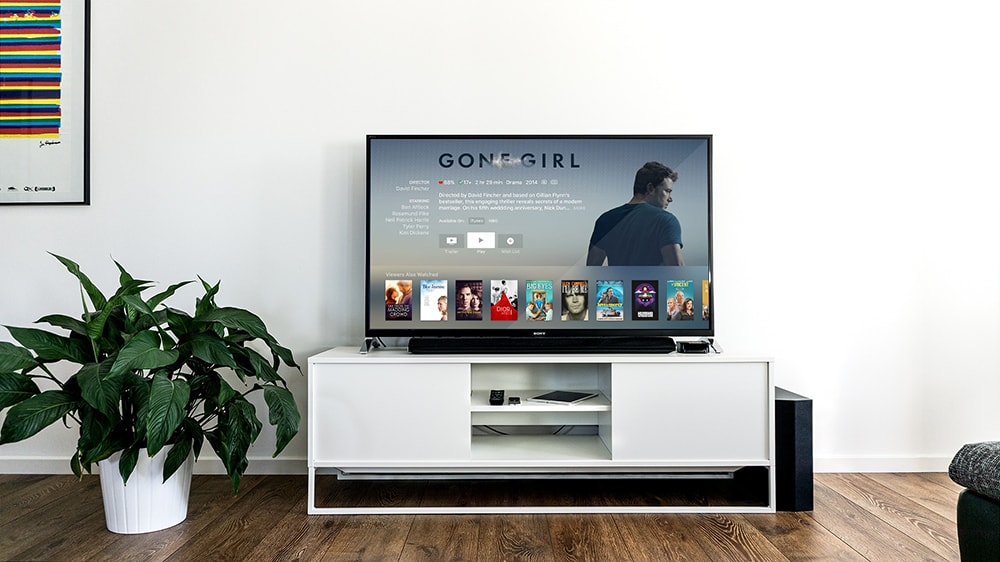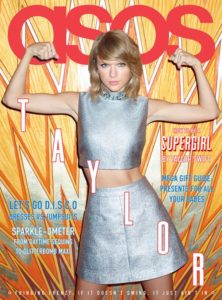Brand Development, Web Design, and Google Analytics Specialists
Experienced in SEM, SEO, Social Media, and Traditional Media
8 Old School Marketing Tactics That Work for Social Media

Link to Original article
Okay, so it’s hard to imagine Don Draper meeting with Bethlehem Steel execs in Sterling Cooper’s top floor Madison Avenue boardroom, telling them to get on Snapchat. But even though we no longer think of typewriters as “technology” or describe TVs as “radios with pictures,” there are plenty of solid ideas from the Mad Men-era of advertising that translate to social media.
So let’s throw it back to a time before #ThrowbackThursday existed for some good old-fashioned advice from the old-school pros.
1. Doing smart, thorough research
In the premier episode of Mad Men, Don Draper trashes an in-house researcher’s report on the psychology of cigarette users and decides to wing a presentation for Lucky Strike executives instead. While Draper pulls it off, not all ad executives were so cavalier.
“Advertising people who ignore research are as dangerous as generals who ignore decodes of enemy signals,” said David Ogilvy, the founder of Ogilvy & Mather who was credited as the “Original Mad Man” and the “Father of Advertising.”
Ogilvy’s experience at Gallup’s Audience Research Institute taught him to value data way before Big Data became a thing. His knack for research-supported copywriting is best exemplified in his headline for a 1960s Rolls-Royce ad, widely considered one of the best auto taglines of all time.

Nowadays, social media marketers looking to emulate the OG Mad Man’s advice should support their strategies with analytics platforms and research-backed ideas.
2. Learning the rules, then breaking them
There are more game changers in the Advertising Hall of Fame than there are rule followers.
“Rules are what the artist breaks; the memorable never emerged from a formula,” said ad exec William Bernbach, creative director who co-founded the agency Doyle Dane Bernbach in 1949.
Bernbach’s “Think Small” campaign for Volkswagen in the 1960s threw out the rulebook for traditional print ads. To sell the compact Beetle to muscle car-crazed Americans, Bernbach’s team departed from convention by picturing a very tiny car on a page filled mainly with blank space. The small idea translated to a big boost in sales and brand loyalty.

Rule breaking may seem trickier on social media, but it’s still possible. BETC’s “Like My Addiction” campaign caught more than 100K Instagrammers by surprise with the reveal that the Parisian “it girl” Louise Delage was a fake account designed to portray a textbook alcoholic. Created for French organization Addict Aide, the initiative demonstrated that it can be difficult to spot signs of youth alcoholism.
3. Avoiding sleazy bait-and-switch tactics
Known as the world’s first female copywriter and the author of the first ad to use sex appeal, Helen Lansdowne Resor was keeping advertising real long before the ad men of the swinging 60s and 70s came onto the scene.
Her conviction that “copy must be believable,” can be found throughout her entire body of work, including her early copywriting for Woodbury Soap Company in 1910. Smooth taglines like “A skin you love to touch,” and “Your skin is what you make it” remained in circulation for decades.

Social media marketers can take Lansdowne Resor’s point in two ways. First, copy should not be too over-the-top or exaggerated, especially since teens are skeptical when it comes to trusting brands. Avoid empty platitudes or superlatives that may arouse doubt.
Second, don’t lie. Millennials are 43 percent more likely than other generations to call a brand out on social media. You dig?
4. Getting right to the heart of things
It’s hard to imagine that the “I ❤ New York” slogan was invented in a pre-emoji world. Sparse in word count and minimal in design, the logo is emblematic of co-creator Jane Maas’ direct approach to advertising.

In How to Advertise, a book Maas co-wrote with colleague Kenneth Roman, she explains, “Commercial attention does not build. Your audience can only become less interested, never more. The level you reach in the first five seconds is the highest you will get, so don’t save your punches.”
The advice is eerily applicable to video marketing in the current digital media ecosystem, where attention spans are running shorter than ever, especially among today’s teenyboppers. You must catch your audience’s attention immediately, or risk losing them entirely.
Check out The Four Key Ingredients of a Perfect Social Video for more pointers on creating punchy video campaigns.
5. Using the right imagery
Inspired by a sea lion performance at a zoo, John Gilroy developed the “My Goodness, My Guinness” for the Irish beer company in the late 1920s. The series depicts a flabbergasted zookeeper prying his beer from the arms of a polar bear, the pouch of a kangaroo and the jaws of a crocodile. And, of course, a toucan.
The humorous misadventures of the zookeeper pop with vibrant colors set against an often-white backdrop. Keen observers point out that it was Gilroy’s uniform use of typography that helped solidify Guinness’ brand image. The popularity of the artwork and consistency of style made it one of the longest advertising campaigns in history.
Using images is a great way to up your social media game, especially since visuals can aid in information retention. Marketers should ensure that photos complement branding and style guidelines. And where possible, add the logo and logotype to the image. Consistency in style is a bonus, but it will help your followers recognize your brand on any platform.
If you don’t have access to artists, photographers, or graphic designers, check out these resources for creating quick and beautiful images for social media.
6. Ditching the one-size-fits-all approach
As the first black man in Chicago advertising, Tom Burrell quickly saw that advertising boardrooms had a diversity problem. Too often, ad execs would create content for white audiences and expect it to have broad appeal. Or, they’d create a commercial for white actors and film a second version with black actors.
After witnessing a number of tone-deaf gaffs and insensitive blunders, Burrell found himself repeating to his colleagues, “Black people are not dark-skinned white people.”
By advocating for tailoring messages for specific communities, he was one of the first to pioneer ethnic micro targeting in advertising. He founded his own agency, Burrell Communications, in 1971 and quickly became the authority on crafting messages for African-American audiences.
In work he did for McDonalds, Burrell reasoned that the company’s slogan “You deserve a break today” sounded too occasional for many African Americans who had a more regular experience with the fast food chain. Instead, he came up with lines like “Sure is good to have around” and “Get down with something good at McDonald’s.”

With Gen Zers forming the most ethnically diverse population in U.S. history, Burrell’s approach is one that social media marketers should put in practice.
Here’s how to find your audience on social media.
7. Knowing that context matters
In 1970, advertisers working for Schaefer beer created a print ad to commemorate the company’s tradition of producing America’s oldest lager. The minimal layout was designed to place emphasis on the year Schaefer’s lager was introduced, with a 10-word tagline reading: “1842. It was a very good year for beer drinkers.”
The two-page ad was placed in a number of popular publications such as LIFE Magazine. But its placement in Ebony Magazine, a publication with a predominantly African American readership, drew criticism.
As Tom Burrell points out in an interview with NPR Planet Money, the year 1842 in the United States was a year many black people were enslaved. “It just screamed insensitivity,” he says. “It was a horrible year for us.”

Getting context wrong can make a brand appear ignorant at best. At worst, it can cause lasting damage to a brand’s image.
Getting context right, on the other hand, can have a positive effect. Wells Fargo adapted its television commercial so that would be optimized for Facebook, where viewers prefer shorter content and may watch videos without sound. To promote the launch of Friends and prove the show’s relevance, Netflix’s Pre-Roll campaign shows viewers a clip related to the YouTube video they’re about to watch.
Social media marketers should shift from cross-posting to cross-promoting, with content tailored to suit each platform.
8. Engaging the audience in a conversation
In the 1950s, American advertising executive Shirley Polykoff’s personal approach to copywriting convinced women across the United States to colour their hair. By posing the question “Does she… or doesn’t she?” in Clairol hair-dye commercials, she reassured women that a hair colouring—then a new fad—could look natural.
“Copy is a direct conversation with the consumer,” she said. Her lingo was so effective that it’s now part of the vernacular: “So natural only her hairdresser knows for sure” and “Is it true blondes have more fun?” Who knows, maybe if she’d worked on a campaign for Rogaine we’d still be using the phrase Chrome Dome.

Besides being concise and memorable, Polykoff does something important in her copy that all modern social media marketers should take note of—she asks a question. Posing questions to your audience is a great way to get followers engaged and increase the visibility of your campaigns, such as Airbnb’s #TripsOnAirbnb campaign.
To get the conversation going on social media, Airbnb asked followers to describe their perfect vacation in three emojis. Not only did the prompt generate hundreds of responses, but Airbnb kept the conversation going by responding to each submission with Airbnb Experience suggestions. Remember, if you want to start a convo, follow-through is key.
More brands have been exploring the opportunities to engage via direct messaging, too. To jumpstart conversations between brands and users, Facebook just introduced Click-to-Messenger ads.
How Traditional and Digital Marketing Work Together to Power Your Business Goals

Traditional marketing has drastically changed through the evolution of the digital age, and the societal integration of social media. The past 15 years of revolutionary change has caused confusion, doubt, and misunderstanding. Leaving many marketers in the lurch as they attempt to navigate in an ever-changing advertising landscape.
As a result, some are ditching traditional methods completely in hopes of online techniques bringing them holy grail-like ROIs they once experienced. According to Above the Fold’s Traditional Media Strategist Charlie DeNatale, “Traditional media is not broken. What needs to be fixed is the mindset change of what traditional media’s role use to be and what its role is today.”
While digital media strategy is highly important and necessary for producing results and to compete, using a combination of traditional and digital marketing techniques is proving to be the most effective method to elevating success.
The combination of traditional and digital is a one two punch for driving awareness and sales. When combined, they compensate for each other’s weaknesses and so the benefits of both plans are gained as they work in synchronicity.
How to Marry Traditional and Digital Marketing
1. Multiple Channel Approach
By taking advantage of a wider range of traditional and digital techniques, you’re putting your company’s message in front of a diversified audience. For example, a placement during on a cable network like the Hallmark Channel will most likely reach an older audience, while a placement during a teen drama on Hulu will hit a chord with a younger audience.

Depending on the target, some media outlets and types are more successful than others, especially when you consider that a younger audience is more digitally savvy than say their parents’ generation. Using both methods allows your company to reach the full spectrum of potential customers.
One brand that seamlessly integrates both a traditional and digital strategy is fast food chain, Wendy’s. Through their social channels they’ve built a rabid following, eager to consume and interact with the brand through their regular roasting of competing brands and Twitter followers. Their savage tweets have brought a whole new generation of Wendy’s fans and patrons into the fold. They also regularly utilize traditional channels like TV commercials, print, and billboards to attract new and old customers to their restaurants.
2. Segment Campaigns by Active & Passive
Figure out first what your company’s objectives are with your campaign. Is it brand awareness? Driving sales to a new product offering? Introducing your brand to a new generation?
Then you can segment your campaign strategy based upon the activity of the consumer. Traditional marketing is considered to be passive, while digital marketing involves targeting a specific audience, making it active.
While they may be segmented by audience or purpose, they can still maintain a common thread to boost the success of the campaign’s overall goals.
One common thread could be a hashtag. Ask your social followers to take a picture with your product and use the hashtag to be featured or win a contest. Place this same hashtag in our traditional media placements to spread it far and wide, giving it visibility beyond the digital sphere.
3. Get Personal
The amazing result of digital marketing is how its given brands and small businesses the ability to connect with consumers at a deeper personal level. Gone are the days where a customer has to go through the customer service department to get a question answered or a problem resolved. All they have to do is leave an Instagram comment or Tweet at the business and typically within no time they’re getting a direct reply from the company; building trust and affinity.
With social media’s personal touch it’s now more important than ever to have a strategic approach when considering traditional media. Not just what you buy, but how you buy it, how it supports a digital campaign and the influence it has on SEO, PPC, website traffic, and sales.

A great example of a company using traditional and digital to get more personal with their consumers is online fashion retailer, Asos. They release a regular Asos Magazine that features not only their latest fashions and product offerings, but articles related to pop culture, rising stars and musical acts, and other millennial targeted pieces.
Every item featured in the magazine can then be found on a dedicated page titled, “Shop the Asos Magazine.” This gives the reader the chance to emulate their favorite starlet or take the look from the page, and wear it in real life.
It’s a strategy that’s working. Especially when coupled with their hashtag #asseenonme, which encourages their followers to use the hashtag with their Asos look for a chance to be featured on their 6.7M follower Instagram account.
How good is the hashtag working? To the sound of 676,609 photos and counting. Getting personal is the key to building a cult following, or at the very least an audience that’s dedicated to your brand.
In the End, Take a Holistic Approach
Shrewdly evaluate your current traditional and digital efforts with a holistic approach. Understand the “Balance” of your budget allocation between traditional and digital. Use the techniques together to create a cohesive marketing strategy that drives tangible results for your business. If you’re not using both than your business may not be attracting all of your potential customers.
Above the Fold can help you apply these techniques and develop a strategic traditional and digital marketing plan. Contact us today at 760.613.1212 to learn more!
Why Going Cheap on Your Branding Is One of the Worst Mistakes You Can Make

Going cheap on your brand development could not only lead to a disconnect with potential customers, but could also result in your company shutting its doors as a result of low sales.
Your brand has a life.
Believe it or not, this thing you’ve created has legs to stand on, living and breathing every day. While this may sound high-minded, statistics prove otherwise. According to a study compiled by Bop Design, 54 percent of people don’t trust brands. But for those who do, 64 percent cite sharing a common bond with the brand as their primary reason for following or purchasing from them.
Why is this the case? Because your brand is your business’s first impression, and if done poorly, possibly the last. To some, branding seems like a luxury investment (and in some cases, this is true). However, going cheap on your brand development could not only lead to a disconnect with potential customers, but could also result in your company shutting its doors as a result of low sales. It’s a nightmare scenario for most entrepreneurs, which is why I’m going to go over a few reasons why investing in your brand is one of the wisest investments you could make.
A story you can sink your teeth into.
Breathe life into your business with a brand story or mission statement. Let’s be honest, coming up with your brand’s story is not an easy task. It’s going to take a lot of self-reflection and doubt, running through your purpose as to why your business exists in the first place. Additionally, this mantra will be what dictates every piece of copy or content your company puts out, creating a skeleton of how your voice will sound.
Let’s look at Whole Foods. The company could have created a wholesome-looking logo to lure people through its doors, but the multi-national retailer takes careful measures to back up its introduction to consumers. The brand has built a foundation of offering healthy and nutritious foods, and this foundation informs every marketing initiative and company development. From offering in-store educational experiences to teach consumers about food and emerging brands to getting involved in community-building programs through donating food to shelters and supporting local vendors, Whole Foods doesn’t just view its brand story as a marketing ploy, but leans on its pillars to guide the brand forward.
As Kissmetrics points out, there’s an actual science to what we deem as an authentic brand story. This breaks down to what’s essentially called neural coupling, or the emotional connection we feel when hearing a story. However, reaching this point might not be easily solved on your own, especially if you’re in a time crunch to launch.
While it’s up to you to have an agency or consulting firm take over your entire branding objectives, a lot of this is going to come from you. It’s not a bad idea to gain an outside perspective from someone to ask you the tough questions on why you started your business and what it represents, as well as where exactly you want it to head. The love you feel for what you’ve created is something most will understand, which is why having a third party pull the beauty of that out of you and translate it in a way others can comprehend is vital.
Because once you release your brand to the outside world, the perception of what it represents no longer belongs to only you anymore.
Your brand is more than just a logo.
A common misconception by novices in the branding world is making the assumption that a logo and a brand are synonymous. While your logo is one of the most important visual assets for your company — it is just the beginning. From there, you need bring your brand to life by embodying your values through marketing initiatives, product development and customer experience enhancements. Your brand’s goal is to represent an idea or shared truth between you and your audience, and that shared truth should permeate into the ethos of your business. It’s a common bond that drives towards a specific mission, which is something you’re going to miss the mark on by simply going for a cheap logo with the idea you’ll fix it later on.
When it comes to your logo, this symbol is going to represent an ethos that reflects upon how your company is aiming to change the world. Take the Whole Foods logo, for example. Many consumers in every major market across the country not only instantly recognize the green Whole Foods font, but new consumers also immediately recognize what the Whole Foods brand stands for thanks to the homage its logo pays to fruit and natural foods.
There’s plenty of places you can get a quality logo that won’t break the bank (I recommend checking out Deluxe). Remember, your logo is literally going to be everywhere your company is, so make it worth the ink it’s printed on. Plus, when done right, your logo is going to serve the purpose of telling your brand’s story without saying a word. So you have your logo … now what?
People talk, so you should listen.
How your brand is going to interact with the outside world will largely dictate the success of your company. From trade shows to social media, every interaction can give a valid perspective on who your company actually is. As Pew Research notes, more than 68 percent of all U.S. adults are on social media, so the potential amount of feedback you might receive could be tremendous.
Your brand is going to represent that universal truth you share with your consumers. Although discovering this is going to be tough, the rewards will be tremendous. People will no longer just be fans, but evangelists for what you’re about. Which begs the question: Are you ready to not just tell your story, but make it one that can stand the test of time?
About Andrew Medal: He is the founder of creative digital agency Agent Beta. He has helped organizations like the California Education Department, Proctor & Gamble, Microsoft, Warner Bros. and Inc. Magazine.
